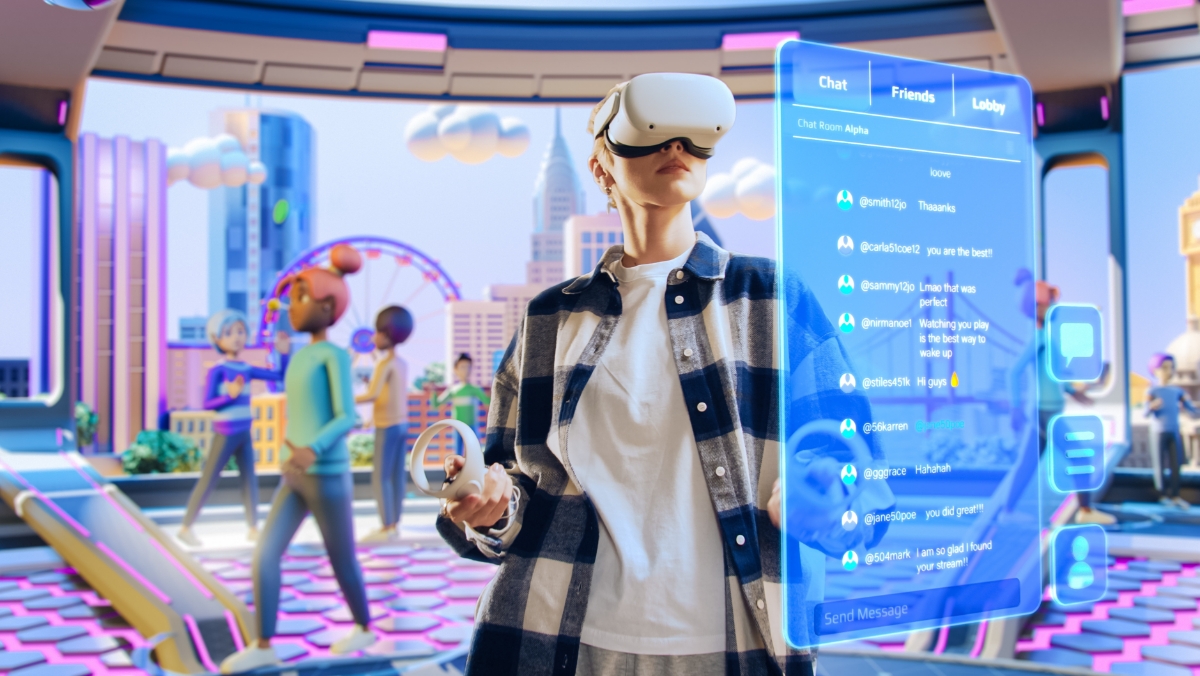
Virtual reality (VR) is still in its nascent stages, with numerous unexplored paths lying ahead. This exciting prospect beckons us to delve deeper into its possibilities.
With recent announcements by Apple and Meta, hardware development in VR is once again gaining momentum. Moreover, content in the VR realm has become more diverse and captivating than ever before. Actors, studios, creators, and Web3 players are joining forces, connecting the dots for a thriving VR ecosystem. However, it’s crucial to acknowledge the need for better structuring within the industry. Instead of merely reacting to market fluctuations and software/hardware advancements, it’s time to proactively communicate with the audience, establish strong branding for recognition, and ensure increasing relevance.
Many VR platforms have failed to put people at the core of their approach and develop their value and uniqueness.
Despite constant technological advancements and increasingly engaging content, the challenge lies in acquiring and retaining users. Their value propositions often remain vague, centered around socializing, having fun, or gaming with friends. This raises the question of whether Metaverses have been overshadowed by the brands they host.
Leading brands are expanding into Metaverses
While people still seek human connections within Metaverses, commercial brands have eagerly embraced this new medium. Brands like Balenciaga, Nissan, Nike, Gucci, Walmart or Sephora, and many others have established their presence in platforms like Fortnite, Roblox, Decentraland, or Zepeto, respectively, enhancing customer engagement. These leading brands understand the potential of Metaverses as a global community for targeted marketing and advertising. By positioning themselves in Metaverses, brands showcase their forward-thinking and innovative nature, attracting tech-savvy and trend-conscious consumers.
Learning from their success and failure
While established brands make the most of Metaverse opportunities, it’s essential to question why Metaverse-specific brands have not learned from their counterparts. Metaverses lack a clear branding approach and often oscillate between idealistic (sometimes scary and cold) visions of the future and vague promises of improved experiences.
It’s crucial not to build Metaverses exclusively for the affluent or create luxurious environments. Metaverses should cater to everyday individuals, striving for inclusivity and meaningful experiences.
In an era where most of the Metaverses focus on content creation and experience, emphasizing the positive changes that a platform can make, like democratizing the Metaverse and increasing accessibility, will differentiate a brand.
Blockchain- based Metaverse Decentraland, for example, is entirely controlled by its community, and positions itself as a foundation. Educating users about the technology and philosophy of Web3 in an entertaining way, it positions users as key to the success of the Metaverse as a broader concept. Sandbox is another blockchain- based Metaverse that communicates its positive impact, either through their Foundation, whose mission is to promote Metaverse awareness and engagement through various funds and grants, or through multiple environmental projects that they have spearheaded.
Building a unique brand experience in the Metaverse
How do you build Metaverses for everyday individuals, ticking the inclusivity and meaningful experiences boxes? It starts with prioritizing humans over tech: prioritizing community-building in an increasingly technology-driven era. Facilitating connections though enriching experiences is one way to go about this. The View, for example, creates vivid, positive, and lifestyle-oriented experiences, beyond its virtual reality origins. By embracing the solar punk aesthetic, The View envisions a future where nature and technology coexist harmoniously, inspiring tranquility, creativity, and positivity.
Another factor to take seriously is brand transparency. In the Metaverse, where virtual experiences blend with reality, authenticity holds immense power. Brands that prioritize transparency and honesty build a strong foundation of trust with their audience. Embracing authenticity means aligning virtual brand experiences with the core values, ethics, and mission of the brand, fostering credibility and resonating with users on a deeper level.
Looking at the bigger Metaverse players, it’s clear they consistently iterate and improve their products and emphasize the theme of transparency by making past and future product updates easily accessible to users. Decentraland publishes annual updates which recap the major changes made during the year, allowing users to stay in touch with developments. The users are also allowed to vote on product decisions, and each user can propose a new addition to the platform and everyone interested can vote for or against the idea. Other platforms, like Star Atlas, have made their official roadmap accessible on Notion, providing full transparency and allowing their community to stay up to date with the latest developments and product updates. Sharing frequent product updates and enabling the community to vote on the future development of the product can be seen as one of the reasons for the success of these platforms.
Crafting a brand experience like a startup
Building a brand in the Metaverse is akin to the start-up world, filled with uncertainties and the potential for pivoting. Despite resource and budget limitations, focusing on the brand experience becomes crucial. Envisioning the desired feel and imbuing the brand with soul and character help create a compelling narrative. Placing people at the core of this narrative is paramount, allowing for flexibility and adaptability. Embracing the ever-changing nature of VR, brands can set their own rules, refine their articulation every six months, and navigate the risks inherent in the virtual reality landscape.
Branding a Metaverse is also about challenging the old rules, the sense of stability and the monolithic approach we’ve been following for a while. We have to think in stages, we have to think agile.
Branding a Metaverse is a continuous effort to accompany the people into this journey–here, branding becomes agile and evolutive, it’s no shame to revisit your brand every 6 months while you redefine some of its core elements. On the contrary, it becomes a must to keep the brand and its assets vivid and close to the people.
The future of Metaverses lies in building strong brands and delivering engaging experiences. By strategically shaping the brand ecosystem, reflecting the dynamic nature of the VR industry, and embracing the unknown, Metaverse brands can capture the essence of this transformative technology.
Cover image source: Gorodenkoff